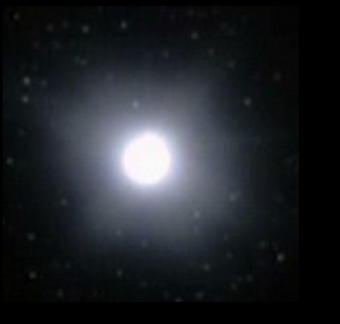
A white dwarf is a star formed when a red giant runs out
of helium fuel after losing most of its mass into space.
In 2364, the SS Tsiolkovsky was observing the formation
of a white dwarf when its crew succumbed to polywater intoxication. The
USS Enterprise-D, sent to investigate, was subsequently threatened by a
stellar core fragment thrown off by the collapse of the red giant.
(TNG: "The Naked Now")
White dwarfs are the only natural source of vertion
particles. In 2370, a network emergent circuit nodes aboard the
Enterprise-D collected vertions from the white dwarf Tambor Beta-6 to
sustain their growth, but the supply from a single star proved
insufficient. (TNG: "Emergence")
A white dwarf is a dim, dense, planet-sized star that
marks the evolutionary endpoint for all but the most massive stars. The
first white dwarf to be discovered, in 1862, and the closest to the
Sun, is the companion of Sirius.
White dwarfs form from the collapse of stellar cores in
which nuclear fusion has stopped, and are exposed to space following
the loss of the old star's bloated outer envelope, typically as a
planetary nebula. They consist of electron degenerate matter, which
provides the pressure needed to prevent further collapse, providing
that the mass of the dwarf doesn't exceed the Chandrasekhar limit of
about 1.4 solar masses. Even a fairly large white dwarf, with a mass
similar to that of the Sun, is only about as big as Earth.
|
